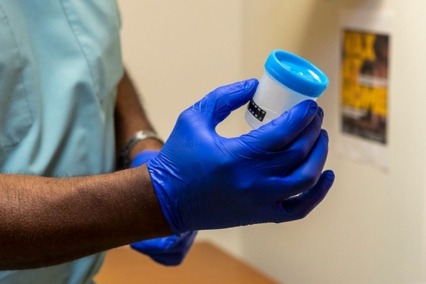Highlights
Image

NIDA Image
- Drug testing looks for the presence or absence of specific drugs in a biological sample, such as urine, blood, or hair. Drug testing cannot diagnose a substance use disorder. As a tool in substance use treatment programs, drug testing can monitor a patient’s progress and inform their treatment. Substance use treatment programs should not use drug testing results alone to discharge patients from treatment. Drug testing is also used in workplace and justice settings.
- While multiple test options are available, urine drug screening is most common. An initial urine drug screen can deliver rapid results but can be affected by factors, such as certain medications, that can cause incorrect results (called a false positive or a false negative). If an initial test is positive, health care providers can order a sensitive and specific confirmatory test. For all testing methods, accurate interpretation may require consultations with specialists such as Medical Review Officers (MRO) and medical toxicologists.
- NIDA supports and conducts research to improve drug testing by investigating more accurate and accessible technologies and applying drug testing in new ways to support individual and public health. NIDA does not administer drug testing programs, assist in interpreting drug test results, or manufacture, regulate, or distribute drug screening products. Learn more about drug testing regulation from the U.S. Food and Drug Administration (FDA) and about workplace drug testing from the Substance Abuse and Mental Health Services Administration (SAMSHA).
Latest from NIDA
What do drug tests really tell us?
|
Stephanie Weiss’s research helps labs use drug screening tools appropriately and interpret results correctly
NIH and FDA leaders call for more research, lower barriers to improve and implement drug- checking tools amid overdose epidemic
|
Tools such as fentanyl test strips hold promise to reduce drug-related harms and save lives
NIH Invests in a New Harm Reduction Research Network
|
Enabling people to access treatment is critical, but first people need to survive long enough to have that choice
Find More Resources on Drug Testing
- Learn more about drug test regulation from the U.S. Food and Drug Administration (FDA).
- Learn more about workplace drug-testing programs from the Substance Abuse and Mental Health Services Administration (SAMHSA).
- Find basic drug testing information from MedlinePlus, a service of NIH’s National Library of Medicine (NLM).
- Find information about drug testing in child welfare from the National Center on Substance Abuse and Child Welfare.



